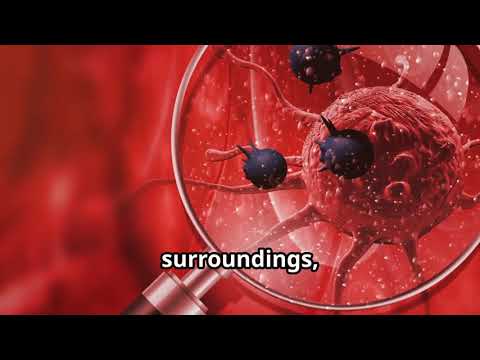
Cancer and Cellular Confusion: How Entropic Waste (EMR Radiation) Can Turn Cells Against Themselves
Discover how cancer cells may regress to a primitive state of behavior, much like dissociative identity disorder, and how modern environmental factors like cell phone radiation might trigger this dangerous shift by disrupting the bioelectrical communication that unifies multicellular life.
We often think of cancer as a result of genetic mutations—a rogue cell multiplying uncontrollably. But what if there’s more to the story? Emerging theories suggest that cancer could be seen as a kind of cellular identity crisis, where cells forget their role within the body and revert to a more primitive, self-centered state. This blog explores how this phenomenon, akin to a form of dissociative identity disorder, is linked to the atavistic theory of cancer. Additionally, we’ll discuss how modern environmental factors, like cell phone radiation, might confuse cells and push them toward this dangerous regression by disrupting the bioelectrical signals that normally unify their functions.
Cancer as a Cellular Identity Crisis
Rethinking Cancer Cells: Imagine if the cells in your body started seeing themselves as entirely separate entities rather than part of a greater whole. This is what happens in cancer, where cells begin to operate with a diminished sense of self. They prioritize their own survival over the needs of the organism, shrinking the boundary between “self” and “non-self.” This is much like a person with dissociative identity disorder, who might experience fragmented identities, with each identity unaware of the others.
The Atavistic Theory of Cancer: The atavistic theory of cancer suggests that this regression isn’t just random but is a throwback to a much older, simpler time in the history of life. Long before complex multicellular organisms evolved, our single-celled ancestors thrived by focusing on their immediate survival, without any need to cooperate with others. Cancer cells, according to this theory, are essentially reverting to this ancient behavior, prioritizing their own growth at the expense of the body.
The Role of Bioelectric Interpretation in Cellular Communication
Bioelectrical Signals: The Language of Cells: While environmental factors like temperature and nutrient availability certainly influence cellular behavior, it’s the patterns of bioelectric activity—electric and magnetic potentials—that truly unify trillions of cells to work together as one. These bioelectrical signals form a complex, space-occupying memory within a continuum of space, allowing cells to interpret their surroundings and communicate with one another effectively. This bioelectrical interpretation is crucial for maintaining the cohesive function of a multicellular organism, ensuring that all cells are aligned with the organism’s overall goals.
How Entropic Waste Disrupts Bioelectric Communication: Our modern environment introduces new types of stressors that can disrupt these bioelectrical patterns. Electromagnetic radiation from cell phones, for example, creates what’s known as “entropic waste,” a chaotic influence that interferes with the electric and magnetic potentials within cells. This disruption can cause cells to misinterpret their surroundings, leading to confusion about their role within the larger organism.
The Dangerous Regression of Cellular Goals
From Cooperation to Chaos: When bioelectrical communication is disrupted, cells may regress to a more primitive state, where they act independently rather than as part of a coordinated multicellular system. This is precisely what happens in cancer. The affected cells, confused by distorted signals, begin to prioritize local, short-term survival goals. They multiply uncontrollably, disregarding the needs of the organism and treating the body’s systems as mere obstacles in their quest for survival.
Implications for Treatment: Understanding cancer as a breakdown in bioelectrical communication opens up new possibilities for treatment. Instead of solely targeting genetic mutations, therapies could focus on restoring the bioelectrical patterns that help cells maintain their proper identity and function within the body. Additionally, reducing exposure to environmental stressors like cell phone radiation could help prevent the cellular confusion that leads to cancer in the first place.
Conclusion: Protecting Our Cells in a Modern World
As we continue to uncover the complexities of cancer, it’s becoming clear that the disease isn’t just about genetic mutations. It’s also about how cells perceive their environment through bioelectrical signals and their place within the body. By viewing cancer as a cellular identity crisis and recognizing the role of modern environmental factors in triggering this crisis, we can better understand how to protect ourselves. Minimizing exposure to entropic waste, such as electromagnetic radiation, might be a key strategy in preventing cancer and maintaining the delicate bioelectrical balance that keeps our cells—and us—healthy.







